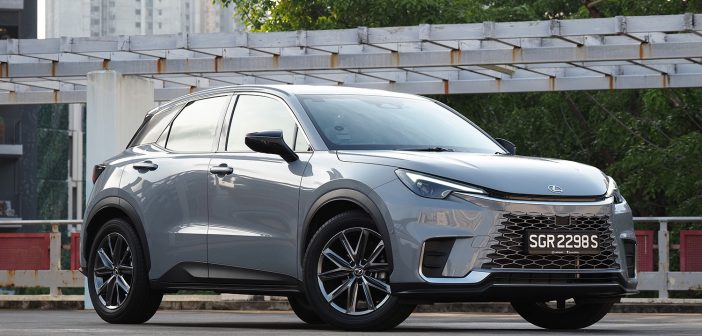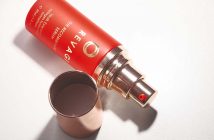Lexus – it’s often one of the least understood and under-appreciated luxury brands in Singapore. I’ll admit, I’m a bit of a Toyota and Lexus fan, so yes, I may be biased here. But, hear me out — I’ve got good reasons.
Like its more famous German rivals, Lexus is all about quality, albeit in a slightly different way. The Germans tend to define “quality” through the driving experience: BMW prioritises the driver’s feel, Mercedes-Benz aims to make you feel luxurious as soon as you step in, and Audi strikes a balance between high-tech comfort and sporty handling.
For Lexus, though, quality is more about the overall ownership experience and craftsmanship. It’s all about the attention to detail — no small part is overlooked, and the car is built to be a reliable and fuss-free workhorse that’ll take care of you for the full 10 years of COE, and then some.
Unfortunately, in Singapore, Lexus’ take on quality is often out of reach due to high prices. There’s never been a CAT A Lexus until now, and because many German cars come with less powerful (and thus cheaper) powertrains, the equivalent Lexus is often more expensive. For example, the BMW 3 Series 318i (154bhp) is priced at S$289,888 (as of July 2025), while the cheapest Lexus IS variant in Singapore, the 300H, a hybrid (219bhp), goes for S$315,800. Ouch.
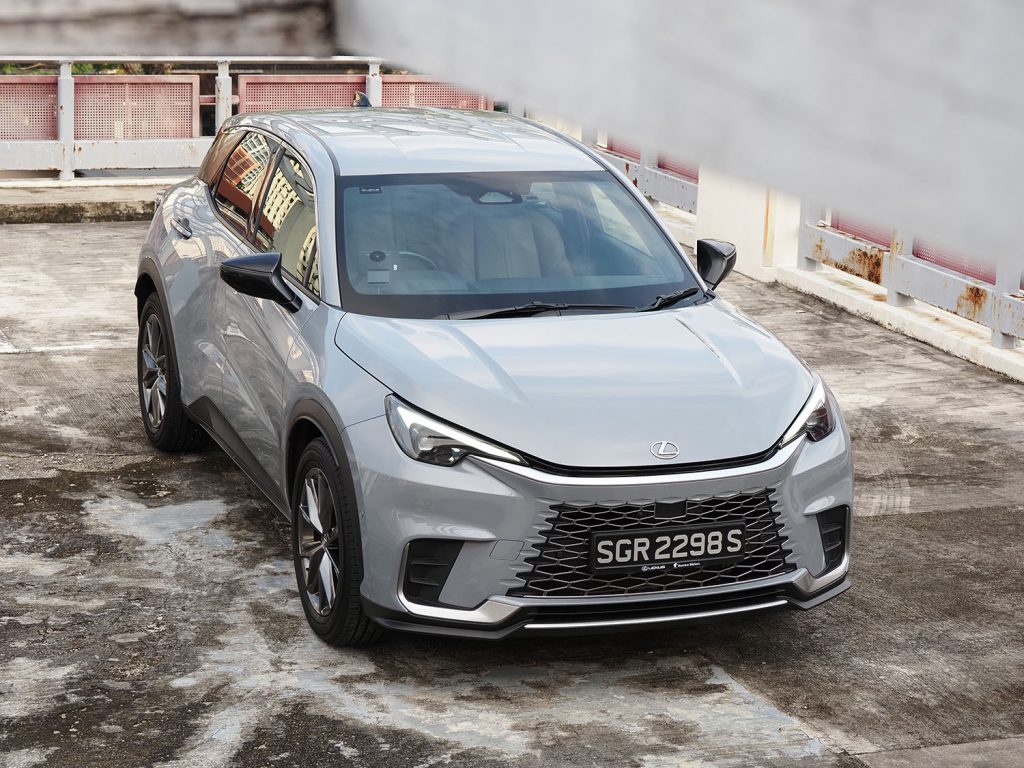
Photo © Calixto Tay
Things changed last year when Lexus dropped their most affordable and smallest vehicle to date, the Lexus LBX. A CAT A compact crossover with a full hybrid drivetrain, the entry ticket to Lexus has now plummeted to S$239,800 for the LBX. That’s a significant step down from the once most affordable Lexus, the UX 300h, which goes for S$298,800.
So, with a price tag that’s “low” by Lexus standards, can the LBX really live up to the Lexus heritage? I spent three days with the LBX to find out.
The Origin Story of Lexus LBX
The creation of the Lexus LBX wasn’t the result of some corporate bean counters sitting in a boardroom, ticking off boxes. Nope. It all began with Akio Toyoda, the grandson of Toyota’s founder, a race car driver, and, oh yeah, the current Chairman of Toyota Corporation. You know, just a few small accomplishments.
One day, after admiring his Maison Margiela shoes, Akio had an epiphany. He thought, and I paraphrase “Why not take the luxury car game and flip it on its head?” Instead of following the same old formula of luxury sedans, Akio challenged his team to create something premium yet casual, breaking the conventional luxury car boundaries. Think of it as luxury that doesn’t take itself too seriously, just like those stylish shoes of his.

Probably not the exact pair worn by Akio Toyoda, but you get the idea. Photo from maisonmargiela.com
This became a decree to his head engineer, and just like that, the Lexus LBX was born.
LBX stands for “Lexus Breakthrough X(cross-over),” and boy, did it live up to its name. Now, let’s dive into what makes the LBX a true breakthrough.
LBX Breakthrough #1: Compact Size, Pocketable Price, Lexus Luxury
Despite its compact size, the Lexus LBX packs in a ton of luxury and tech, keeping the Lexus “Tazuna” concept interior intact. “Tazuna,” which means reins in Japanese (think: horse reins), is designed so the driver feels completely in control, like they’re leading the charge.
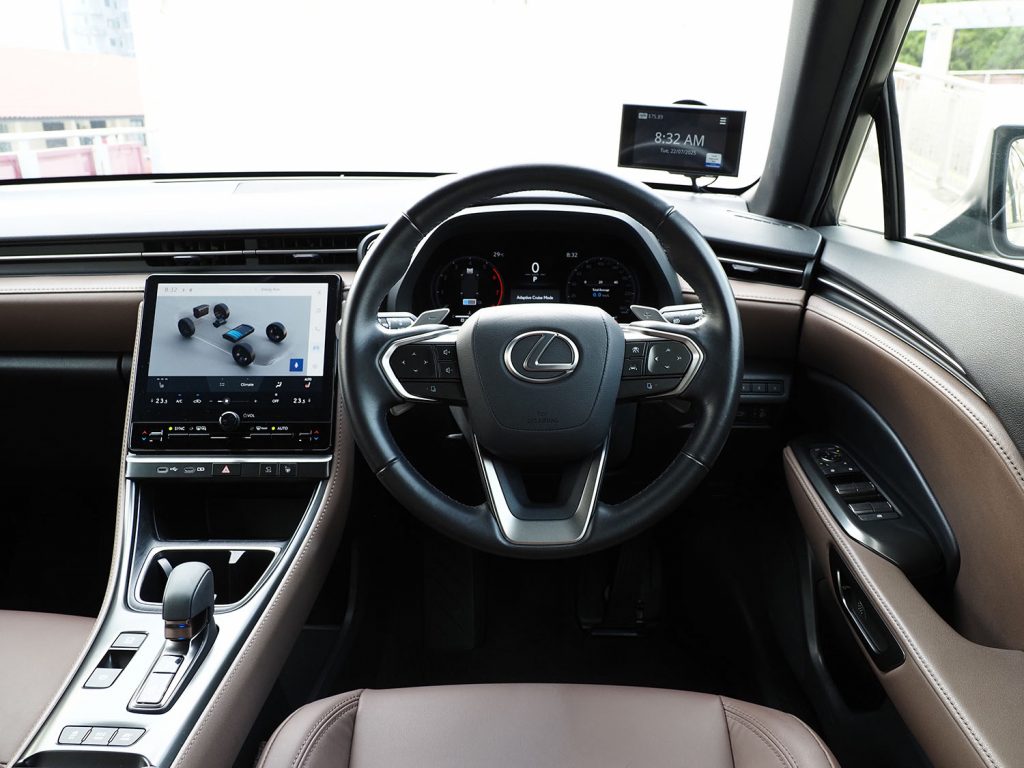
Photo © Calixto Tay
You’ll find everything you’d expect in a luxury vehicle — cushy interior panels, the latest Lexus 9.8-inch infotainment display, a large 12.3-inch instrument cluster, and a HUD. The fit and finish is top-tier, with zero creaks or play.

Photo © Calixto Tay
To take a closer look at the interiors, feel free to pan, pinch and spin with the 360 view below!
LBX Breakthrough #2: New Lexus Design Language
The LBX isn’t just a pretty face — it’s also a whole new take on Lexus design. The frameless trapezoid-patterned grille (an evolution of the iconic Spindle Grille) is fresh, seamlessly flowing into the bonnet. What’s even more interesting is that this design element doesn’t even come from the NX or UX, but from the Lexus LM — the ultra-premium end of their lineup.
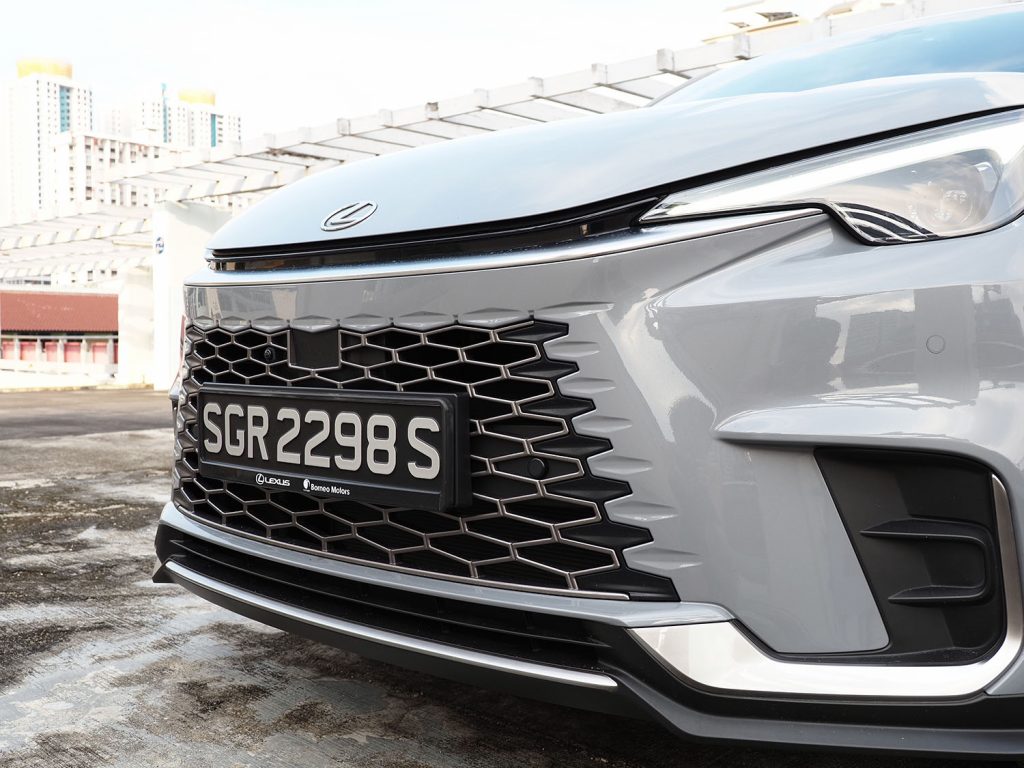
Photo © Calixto Tay
Despite being a compact crossover, the LBX has a wide stance and large wheel arches, making those 18-inch rims feel perfectly at home. It’s compact but powerful, with design cues that shout luxury without the over-the-top attitude.
If you squint a little, you might just make out that the Lexus LBX has a bit of a shoe-shaped silhouette. With its wider rear and thinner waist, it’s almost like Lexus took a little design inspiration from those Maison Margiela shoes Akio Toyoda was wearing.
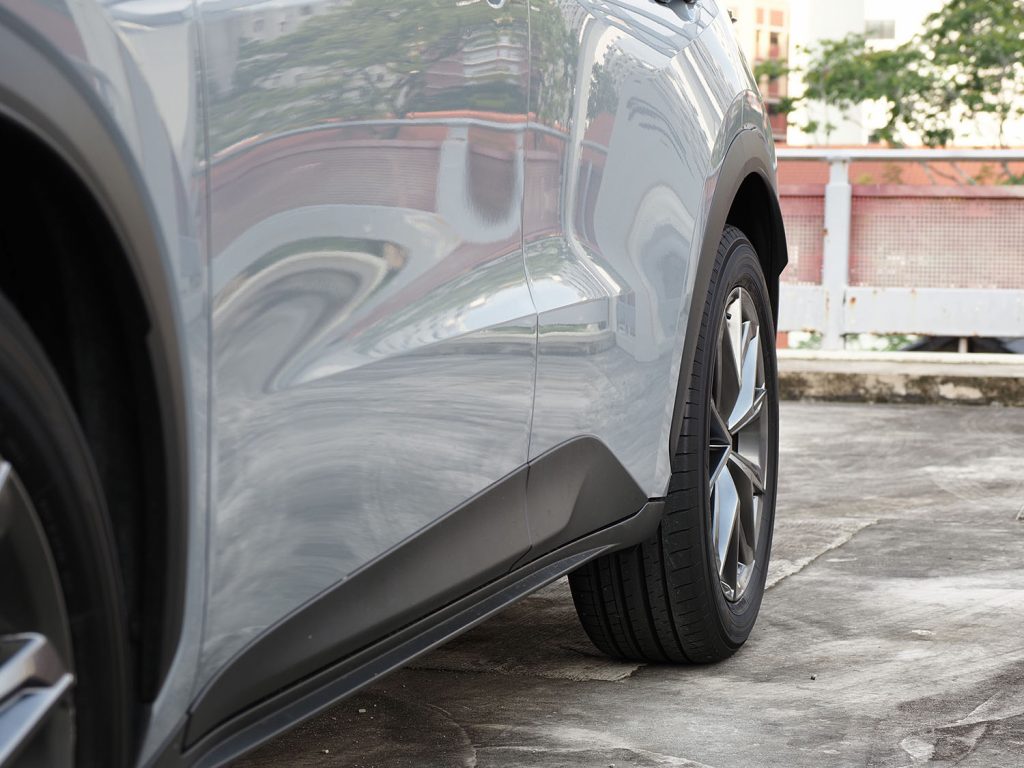
Photo © Calixto Tay
LBX Breakthrough #3: Industry-Leading Self-Charging Full Hybrid
The Lexus LBX comes with a self-charging hybrid drivetrain. That means you’ll never have to plug it in — and honestly, you can’t even if you wanted to, because there’s no charging port. All the power it needs comes from three activities while you’re driving:
-
Regenerative braking
-
Electricity generation from the ICE engine
-
Torque conversion during regular engine use
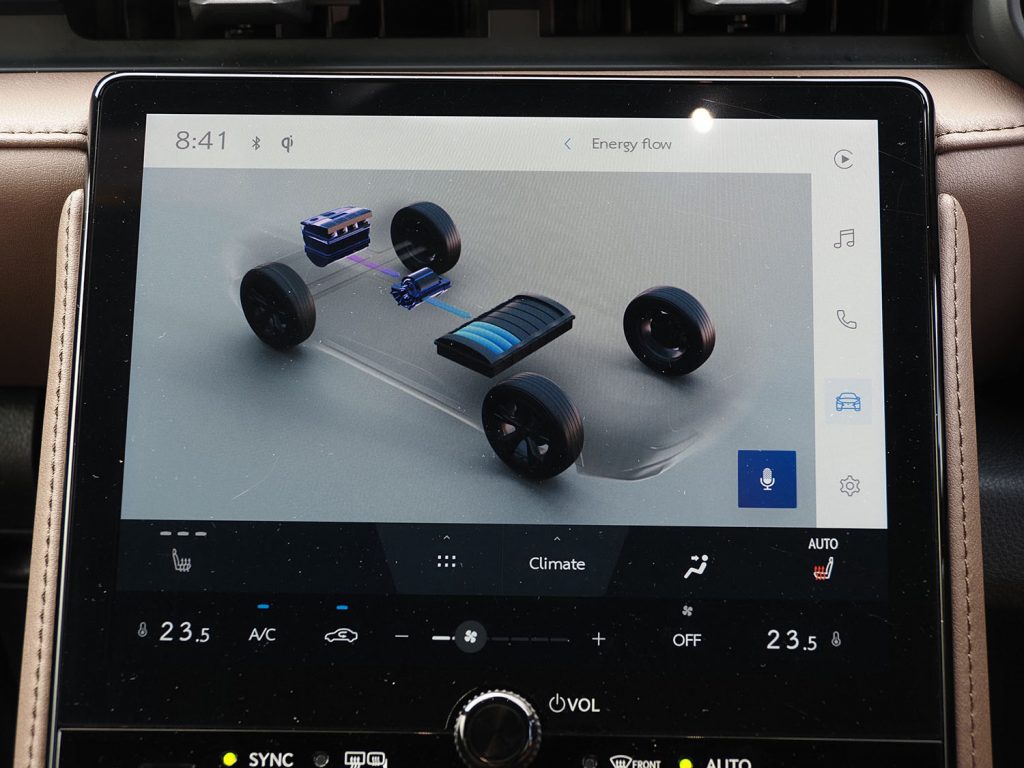
The energy flow between the battery, wheel axle, internal combustion engine and motors can be displayed on the infotainment, a feature pioneered from the very first Prius. Photo © Calixto Tay
Now, I’m a bit of a hybrid system nerd, so bear with me if I get a little deep here with details skimmed over by most other car reviewers.
Here’s why Toyota’s hybrid system is a game-changer: Unlike other manufacturers who’ve only been in the hybrid game for the last 5–10 years, Toyota has been making mass-market hybrids for almost 30 years (hello, first-gen Prius in 1997). They’ve quietly refined their hybrid system to make it more efficient, powerful, and reliable over the years. No one else has the experience that Toyota/Lexus has when it comes to hybrids.
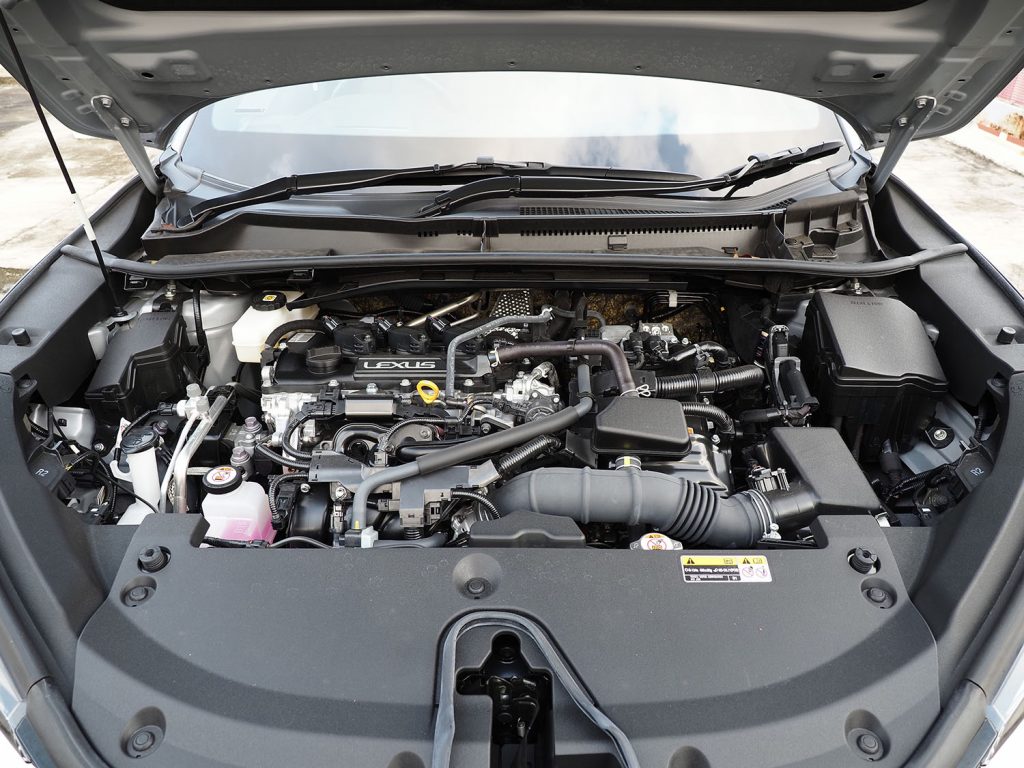
Can you spot the internal combustion engine and electric motor side by side? Photo © Calixto Tay
The system uses fewer moving parts than conventional Internal Combustion Engine (ICE) cars or other hybrids, meaning less wear and tear. The e-CVT system isn’t your typical belt-driven CVT either — it uses a planetary gear system, which is more robust, reliable, and has no belts that can wear out. It also does away with the traditional alternator, because one of the motor generators doubles as an alternator to start the engine immediately.
Safer, More Powerful Hybrid Battery
The LBX uses a bipolar NiMH battery, only the second Lexus model to employ this after last year’s RX refresh. This new battery represents a huge improvement in power density over traditional lithium-ion batteries. In fact, according to Lexus, this NiMH battery is safer and provides more power from standstill than Lithium-based battery used in electric vehicles, making the LBX feel more like an electric vehicle (EV) than a regular hybrid.
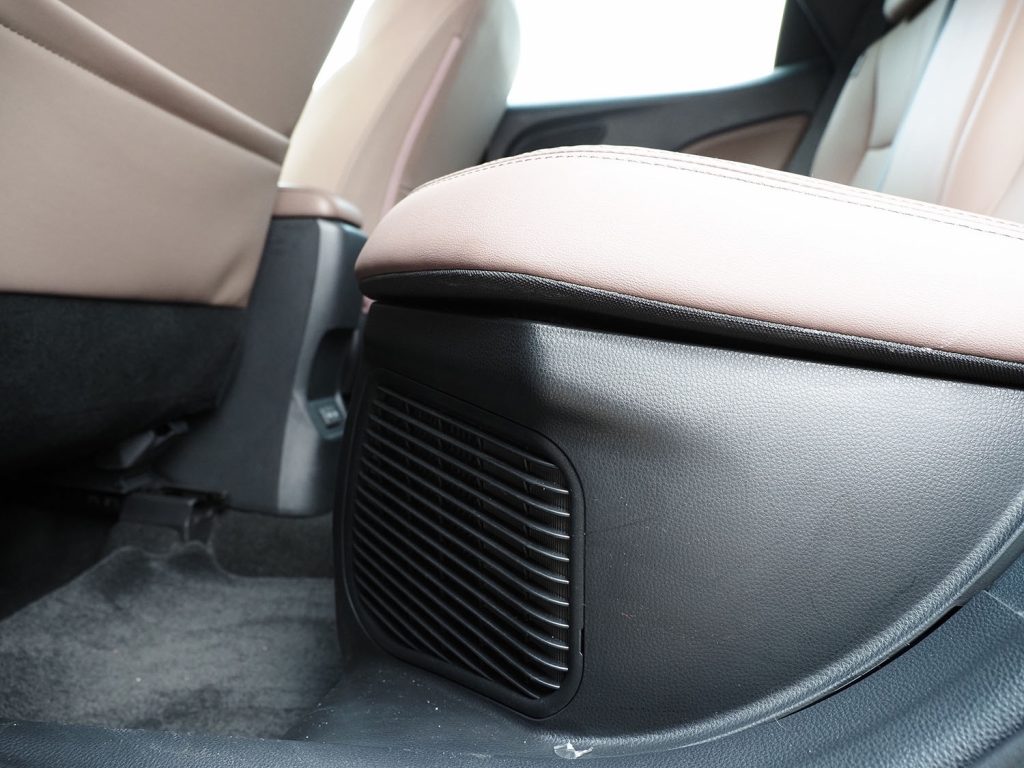
The hybrid battery is located below the rear seat, with a ventilation fan. Photo © Calixto Tay
In my test, the LBX shot off from a standstill quickly and smoothly, with acceleration more akin to an EV than a traditional ICE car. However, once you hit around 50 km/h, you can feel its CAT A status rear its ugly head, and the engine does start to lose a bit of breath and made its protest known, audibly.
The M15A-FXE Engine: A 3-Cylinder Wonder
As for the engine, the M15A-FXE straight-3 engine might sound small, but it’s incredibly smooth and refined, with minimal vibrations. Part of Toyota’s Dynamic Force Engine lineup, it’s optimised for efficiency rather than raw performance — and that’s okay, because the electric motors handle the grunt work.
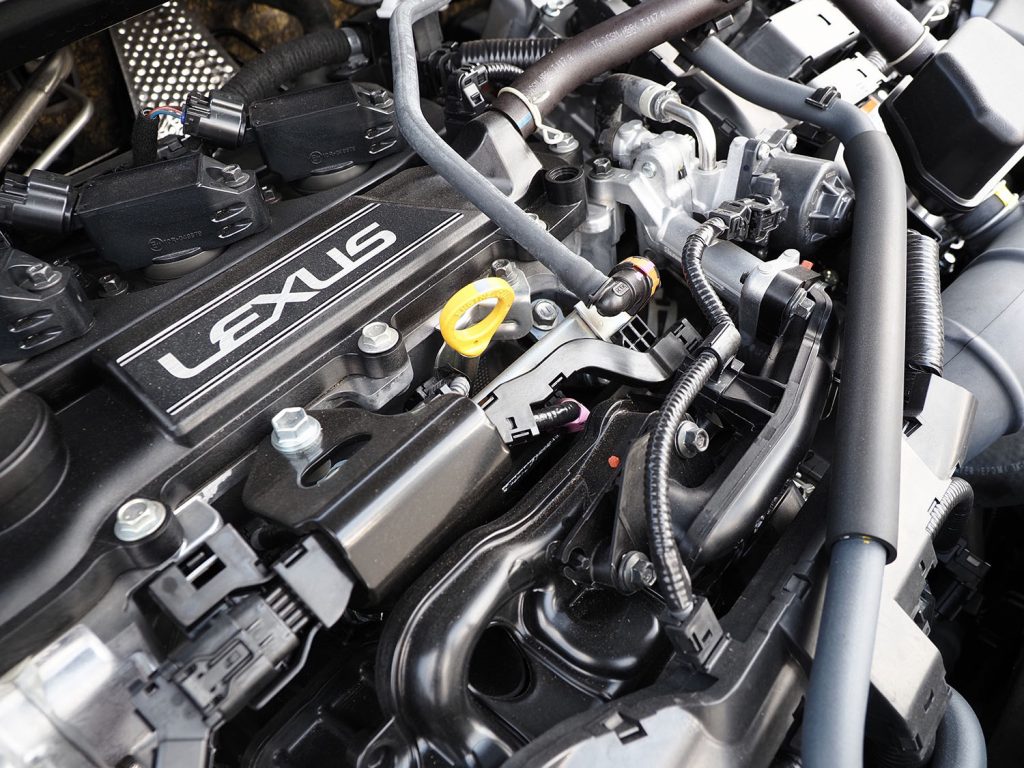
Photo © Calixto Tay
At the same time, as part of Toyota’s Dynamic Force lineup, this engine also comes equipped with Toyota’s D-4S injector system. Unlike most engines that use either port injection (for better fuel efficiency and longevity) or direct injection (for more power but with the risk of carbon build-up), the D-4S system uses both.
Each cylinder has dual injectors, and a clever CPU decides when to switch between them or even run both at once, depending on driving conditions. This means the best of both worlds: more power when you need it, and better efficiency when you don’t. This innovation helps the engine achieve a thermal efficiency of over 40%, which is industry-leading.
TL;DR:
The LBX offers a durable, efficient, and reliable hybrid drivetrain that delivers impressive performance, even for a CAT A vehicle. Whether you’re cruising around town or pushing it a little harder, this hybrid system gives you the best of both worlds — great performance with exceptional fuel efficiency.
LBX Breakthrough #4: Insane Efficiency
We’ve talked about efficiency a lot, but how efficient is the LBX really? Well, different sources claim different figures — Lexus Singapore quotes 19.6 km/L, while some online sources push it to 26.3 km/L. After my own tests, I averaged around 20 km/L, even with a bit of spirited driving. So, whether it’s 26.3 km/L or not, the LBX is certainly a fuel-sipper that still gives you enough pep to enjoy the ride.
Again, that is possible through the combination of a highly efficient engine, electric motors doing the grunt work, and a smart system to charge the batteries from normal use of the car.
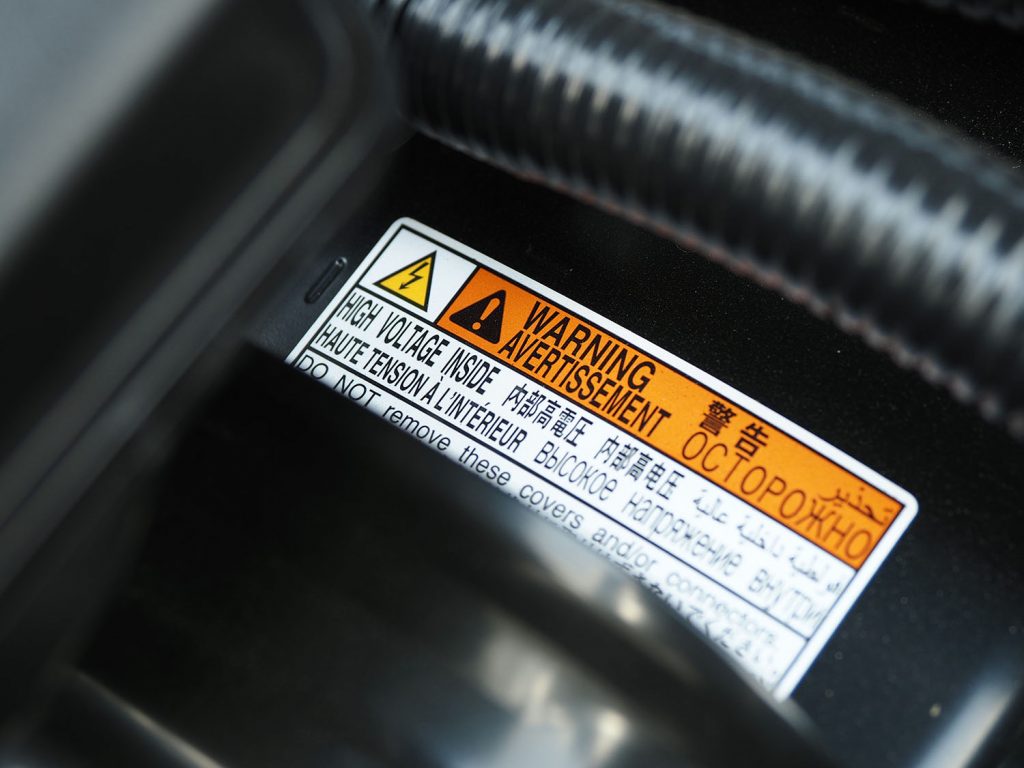
Photo © Calixto Tay
For a CAT A vehicle, this is impressive. It lets you enjoy spirited driving without constantly worrying about the next fuel stop.
LBX Breakthrough #5: Sporty and Nimble
Here’s the fun part: the LBX handles like no other Lexus (except perhaps for the legendary LFA and LC). Forget the comfort-first, mellow handling of the usual Lexus models. This crossover is sporty, nimble, and downright fun to drive. It’s more BMW than Toyota in terms of driving feel.
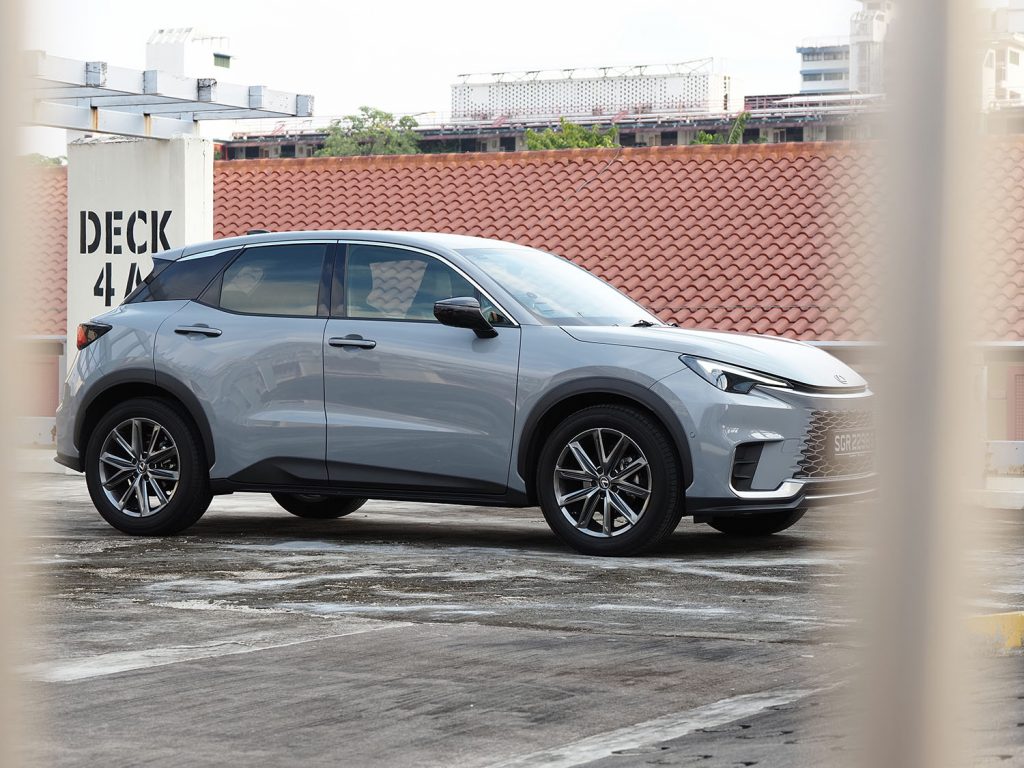
Photo © Calixto Tay
The front suspension is optimised with feedback from none other than Akio Toyoda (Lexus’ master driver and Toyota Group Chairman). On top of that, it’s equipped with Vehicle Braking Posture Control, a system that adjusts the car’s brake balance to minimize body roll and pitching, especially when you’re tackling sharp corners or hard braking.
Yes, it’s a compact crossover, but it doesn’t drive like one. It’s more like a sports hatchback in disguise.
The Elephant in the Room: It’s Based on the Yaris Cross
Okay, here’s the elephant in the room: The LBX shares its chassis with the Toyota Yaris Cross, which, let’s face it, is kind of an entry-level vehicle. Does that make the LBX just another Yaris Cross in disguise?
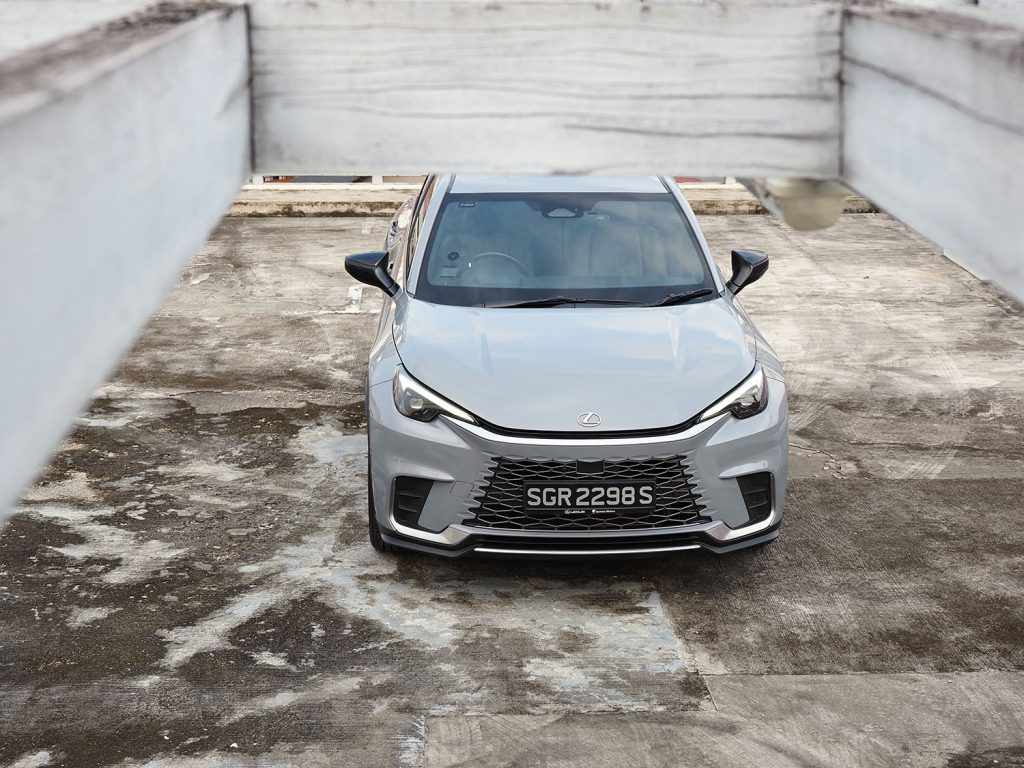
Photo © Calixto Tay
Absolutely not. Saying the LBX is the same as the Yaris Cross is like saying instant noodles are the same as Michelin-star ramen. Sure, they’re both soup noodles, but they’re completely different experiences. The LBX has been fine-tuned, engineered, and designed to feel far more luxurious and sporty than its base counterparts, making it a compelling and affordable luxury crossover.
Who is the Lexus LBX for?
The Lexus LBX is designed for the young, sophisticated drivers who care about the environment, appreciate quality craftsmanship, and want a fuss-free ownership experience. It’s perfect for those who want a premium vehicle that’s not just about looks but also sustainability — a compact luxury option that’s stylish and eco-friendly.
However, during my time at the Lexus showroom, I noticed a surprising trend — there were quite a few retirees also eyeing the LBX. Why? Well, it’s got a spacious boot (400L, to be exact, which is plenty for vehicles of this class), perfect for those grocery runs or carrying the grandkids’ gear. The combination of luxury, fuss-free ownership, reliability and practicality seems to have a universal appeal, no matter the age.
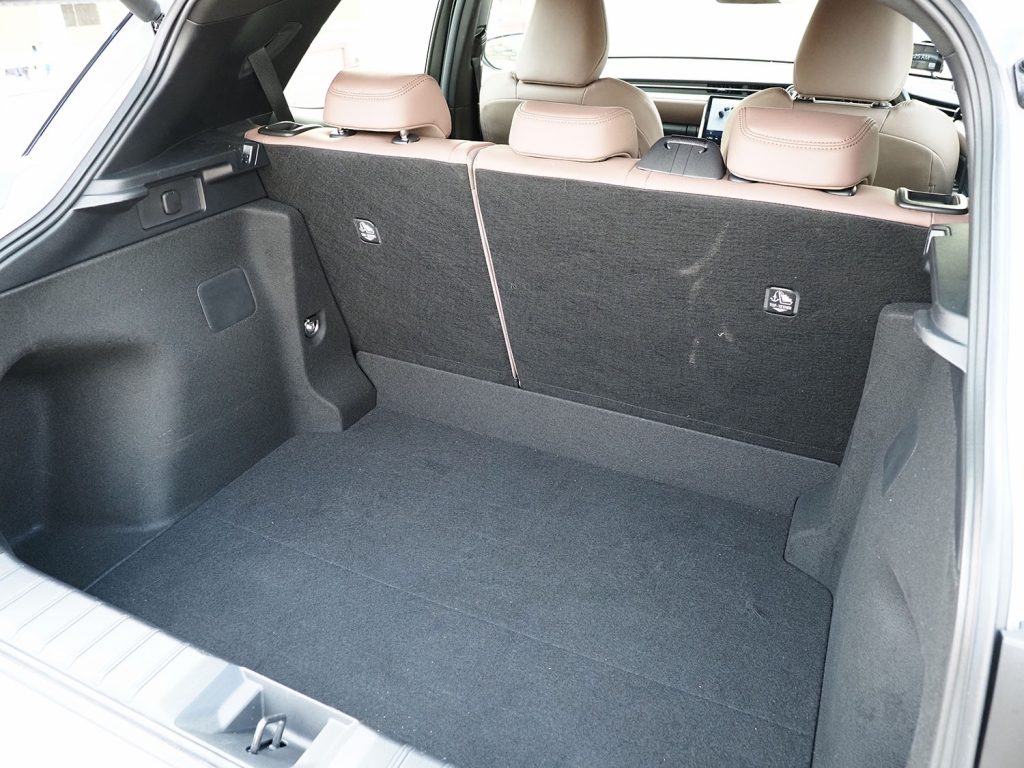
Photo © Calixto Tay
So whether you’re a young professional or someone looking for a practical yet luxurious ride, the LBX is designed to cater to a broad range of drivers.
In summary, the Lexus LBX brings luxury, efficiency, and fun into a package that’s compact, affordable, and perfect for those who want to get into the Lexus family without breaking the bank (as much as other Lexus models). Whether you’re after sporty handling, fuel efficiency, or genuine Lexus luxury, the LBX has you covered.
What’s to like
|
What’s holding it back
|
Key Figures
| Fuel Tank Capacity | 36 L (Estimated 500 to 700 KM range) |
| Dimensions | 4,190 x 1,825 x 1,560mm
Wheelbase 2,580 mm Turning Radius 5,200 mm Kerb Weight 1,340 kg |
| Transmission | Lexus Hybrid Drive / Toyota Hybrid Synergy Drive (Gen 4) |
| Engine & Power | Combined Internal Combustion & Motor
185 Nm 96 kW (129 bhp) 0-100km/h in 9.6s |
| Boot Space | 400 L |
| Price (with COE) | $ 239,800 (Elegant)
$ 244,800 (Cool) As of July 2025 |
To check out the car for yourself, schedule a test drive with Lexus Singapore.

